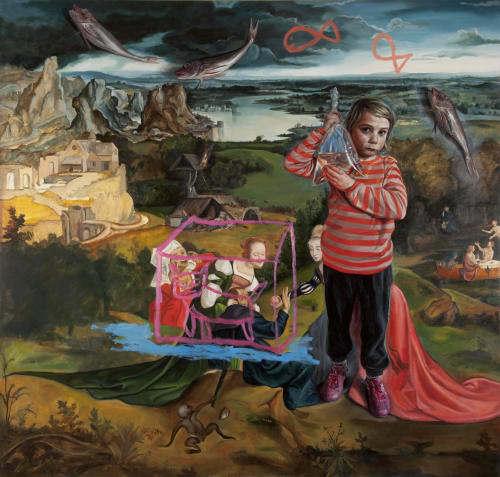Opens Fri. 14 Oct. 4pm - 8pm
On the occasion of our major children’s portraiture project The Sunset Belongs to You, The Model presents Portrait Lab, a thematic exhibition that explores representation through the expanded field of portraiture. The show poses a series of open-ended questions about the way in which portraits function to ask who is reflected in a public portrait collection and who is overlooked. It includes a range of Irish and international artworks including Ugo Rondinone’s Thanx 4 Nothing, 2015 – a film portrait of the poet John Giorno; Phil Collins’ poignant and resonant baghdad screentests, 2002; as well as Brian O’Doherty’s Portrait of Marcel Duchamp, a cardiogram reading taken in 1966. The show also includes Clodagh Emoe’s We Are and Are Not, a work that subverts the duality that lies at the heart of portraiture and deliberately blurs the distinction between the construct of the self and the other. A number of sculptural assemblages by Marie Foley sit alongside more formal portraits by Geraldine O’Neill and Mick O’Dea, while works by artists Brian Teeling, Breda Mayock and Amanda Dunsmore are focused on representing the lived experience of some of Ireland’s minority communities today.
Portraiture is humanity’s most enduring artform, with roots that can be traced back to our earliest known civilisations. For thousands of years the creation of someone’s likeness through drawing, sculpture or painting was the only way to document a person’s physical presence. At the same time, the function of portraiture has always been about more than just a record of how the subject looked. Portraits have been used to demonstrate status, wealth, morality, power, beauty, and even the inner psyche of the subject. For hundreds of years, portraits could only be created by skilled artists, and therefore it was within the domain of only the very wealthy to commission such an artwork. In this way, portraits have played an important role in documenting power and wealth, and in the establishment of the historical record.
With the advent of the camera, capturing a person’s likeness became more democratic, and commissioned portraits went into decline somewhat. As portraiture became uncoupled from the forces of commerce and power, artists began to have more freedom to experiment with the way that they represented people. They paid less attention to capturing precise facial features or exact likenesses and started to develop new compositional devices, sometimes playing with the background, the colour palette, or the materials to explore what these things might reveal about the subject. While traditional portrait painting continues to flourish in the twenty-first century, artists regularly use other materials such as found objects or video to represent a person through portraiture.
At the centre of this exhibition, we have devised a timeline that tracks portraiture’s development from humanity’s earliest civilisations to the present day to enable viewers to anchor their understanding of important changes in the genre through the ages. The exhibition continues until Saturday 21 January, 2023.


